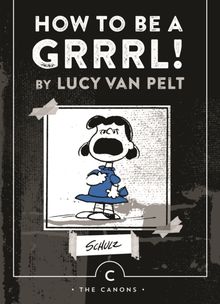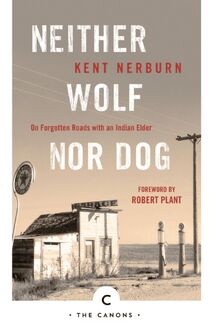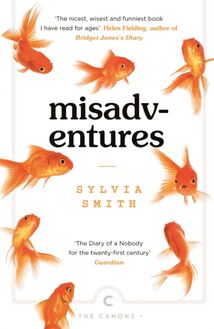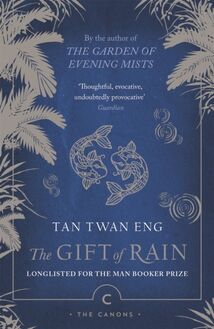Dubliners , livre ebook
125
pages
English
Ebooks
2012
Vous pourrez modifier la taille du texte de cet ouvrage
Obtenez un accès à la bibliothèque pour le consulter en ligne En savoir plus
Découvre YouScribe en t'inscrivant gratuitement
Découvre YouScribe en t'inscrivant gratuitement
125
pages
English
Ebooks
2012
Vous pourrez modifier la taille du texte de cet ouvrage
Obtenez un accès à la bibliothèque pour le consulter en ligne En savoir plus
Publié par
Date de parution
29 mars 2012
Nombre de lectures
0
EAN13
9780857867421
Langue
English
Poids de l'ouvrage
1 Mo
Publié par
Date de parution
29 mars 2012
Nombre de lectures
0
EAN13
9780857867421
Langue
English
Poids de l'ouvrage
1 Mo
James Joyce , born in 1882, attended University College Dublin, before travelling through Europe in his early twenties. His work includes the semi-autobiographical A Portrait of the Artist as a Young Man (1916), the landmark work of modernist fiction Ulysses (1922) and its successor Finnegans Wake (1939). He died in 1941 in Zürich.
Also by James Joyce Fiction A Portrait of the Artist as a Young Man Ulysses Finnegans Wake Finn’s Hotel The Cat and the Devil The Cats of Copenhagen Poetry Chamber Music Giacomo Joyce Pomes Penyeach
The Canons edition published in Great Britain in 2019 by Canongate Books
This digital edition first published in Great Britain in 2012 by Canongate Books
First published in Great Britain in 2012 by Canongate Books Ltd, 14 High Street, Edinburgh EH1 1TE
First published in Great Britain in 1914
canongate.co.uk
Introduction copyright © Colm Tóibín, 2012
The right of James Joyce to be identified as the author of this work has been asserted by him in accordance with the Copyright, Designs and Patents Act 1988
British Library Cataloguing-in-Publication Data A catalogue record for this book is available on request from the British Library
ISBN 978 1 78689 616 2 eISBN 978 0 85786 742 1
CONTENTS
Introduction by Colm Tóibín
The Sisters
An Encounter
Araby
Eveline
After the Race
Two Gallants
The Boarding House
A Little Cloud
Counterparts
Clay
A Painful Case
Ivy Day in the Committee Room
A Mother
Grace
The Dead
INTRODUCTION
by Colm Tóibín
In the autumn of 1974 I moved into a damp room at the back of the basement of one of two gaunt Victorian houses which stood on Upper Hatch Street in the centre of Dublin. They were the only houses on the street and were demolished in the early 1980s. My room was called the garden flat by the genteel landlady who lived upstairs and who often entertained her friends for drinks. There was a sink in the corridor in the basement and a toilet outside, but there was no bathroom. At night as I walked home from a pub or from the National Library, the street which led from Stephen’s Green to Hatch Street was empty and desolate. These were the years before the National Concert Hall was constructed inside the shell of the old university building and when the Conrad Hotel had yet to be built. The university itself had moved to the suburbs and the Harcourt Street train line, which had once run at the back of the house in Hatch Street, was also closed. It was not difficult to imagine that the city which James Joyce wrote about in Dubliners was still in place, perhaps even more paralysed than he had ever imagined. The spirit of scrupulous meanness that he used in his prose was a spirit which a lone walker on those nights could sense as palpable and present.
The basement room in front of mine was inhabited by a man who went to work each morning and came in each night. The few times when I saw him on the street he appeared like a perfectly normal man in a suit. He looked as though he worked in an office, and did not seem in any way odd. But he was not normal – his electricity had been cut off and he lived by candlelight; he never once passed my door to go to the toilet in the backyard. I don’t know what he did instead. Also, he never had rubbish to throw out. It is possible that he spent much of the weekend in his room in bed, but during the week he went out before nine and came back soon after midnight when the pubs shut. I sensed from his fumbling movements at night that he spent the evening drinking somewhere in the city.
That idea of shabby, solitary and secretive lives – men moving alone, their lives half fuelled by alcohol, men trapped in their work, living in a mean boarding house, or in bare rooms, men with some education but scant hope – makes its way into the core of the stories at the centre of Dubliners – ‘Two Gallants’, ‘The Boarding House’, ‘A Little Cloud’, ‘Counterparts’, ‘A Painful Case’ and ‘Grace’.
What is strange is that most of the pubs where these characters in Dubliners drank are in place to this day – O’Neill’s in Suffolk Street, Davy Byrne’s in Duke Street, the Oval in Abbey Street, Mulligan’s in Poolbeg Street. In the 1970s, even the Scotch House was still there. And it is clear, or reasonably clear, that the pub whose stairs Mr Kernan fell down was Kehoe’s in South Anne Street, where the men’s lavatory in the basement is still down a set of steep steps.
As he drew these men, offered them little comfort and tiny moments of possibility, Joyce was concerned not with some dark vision he had of mankind and our fate in the world but rather with the individual self he named and made in all its particularity and privacy. The self’s deep preoccupations, the isolation of the individual consciousness, which keeps so much concealed, were what he wished to dramatise. The self ready to feel fear or remorse, contempt or disloyalty, bravery or timidity; the self in a cage of solitude or in the grip of grim lust; the self ready to notice everything except that there was no escape from the self, or indeed from the dilapidated city; these were his subjects.
In Dubliners , Joyce did not allow his stories of adult experience to be tempered with stories of childhood innocence. The early stories of childhood and youth had a more menacing edge than some of the stories of adulthood. Indeed, the child narrator of the very first story seemed in possession of a darker knowledge than anyone else in the book. In ‘An Encounter’, the narrator, also a school-boy, takes in the disturbed sexuality of the man he meets with a sort of openness and ease. (The story, according to Stanislaus Joyce, was based on a real encounter which the young Joyce had.) In ‘Araby’, a young boy’s obsessive love for a young girl is fully sexualised, made more real and dramatic than any other attachment in the book.
In a letter to a publisher in May 1906 Joyce set out in terms both ambitious and modest what he had in mind when he composed the stories:
My intention was to write a chapter of the moral history of my country and I chose Dublin for the scene because that city seemed to be the centre of paralysis. I have tried to present it to the indifferent public under four of its aspects: childhood, adolescence, maturity and public life. The stories are arranged in this order. I have written it for the most part in a style of scrupulous meanness and with the conviction that he is a very bold man who dares to alter in the presentiment, still more to deform, whatever he has seen and heard.
He began the stories in Dublin in 1904, when he was twenty-two, and finished the last one, ‘The Dead’, in 1907 in Trieste. After many difficulties and bad luck with publishers, Dubliners was published in June 1914.
Joyce’s claim to write ‘a chapter of the moral history of his country’ was grandiose; the stories themselves evaded such easy description. In them, Joyce’s Dublin is a village filled with dreamers and chancers whom he placed in a kind of cage. In ‘Two Gallants’ and ‘Eveline’, there is a strange, almost disturbed watchfulness as the characters dream of escape from the cage of family, or work. In ‘After the Race’ there is an empty hysteria in Doyle’s attempt to keep up with his more sophisticated foreign friends. In many of the stories, the characters are watching, watchful, uneasy. Their desires seem imposed on them, and make them almost feral in their hunting, darting, insecure gestures. Joyce did not judge them, but was utterly alert to their weaknesses and their failures and was concerned to do them justice, whatever vanity or vain hope impelled them.
The city of his fiction was the city just over a decade after the fall of Parnell. In Joyce’s writing, the figure of Charles Stewart Parnell, the lost leader hounded from power, remains pure, beyond reproach or mockery. Parnell had offered not only a political hope, but also a kind of mysterious, spiritual hope, all the more so in the afterglow of his power. Thus the story ‘Ivy Day in the Committee Room’ is an essential part of the story-sequence; it dramatises the empty shell of the society after the leader’s death, the citizens confined to spouting cliché and searching for drink and mawkish companionship. The sense of banality and inconsequence in every line of dialogue and in every character suggests that the glory has departed, that the light has been turned out and the characters left groping in a strange limbo.
This limbo is haunted by the noble shadow of a lost leader, but it is also infested with a strange vision of Irish nationalism, as something which people espoused to make money or help their careers. In ‘Araby’, as part of the shrill street scene, the street-singers sing about O’Donovan Rossa, who favoured a violent nationalism. In ‘After the Race’, Doyle’s father began life ‘as an advanced nationalist’, but then modified his views and made money. In ‘A Little Cloud’, Chandler realises that ‘the Celtic note’ could help his poetry win fame in England. (Joyce did not use such a note in his own poems, as Thomas Kettle noted in a review of his first collection: ‘There is no trace of the folklore, folk dialect, or even the national feeling that have coloured the work of practically every writer in contemporary Ireland.’) In ‘A Mother’, Mrs Kearney is ‘determined to take advantage of her daughter’s name’ as the Irish Revival becomes fashionable. (The concert in this story, according to Stanislaus Joyce, was based on a real event at which Joyce sang, as did John McCormack.) In Dubliners , the effort to escape the paralysis by espousing nationalism is seen as fake and fruitless. It adds an extra tawdriness to the characters who try; they are people on the make rather than a nation in search of freedom. This is further emphasised by the large number of references to pure commerce and the use of many brand names. The characters in Dubliners were consumers before they were citizens













